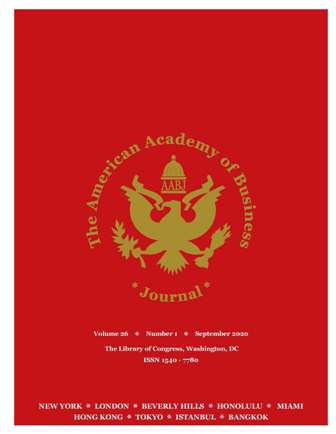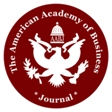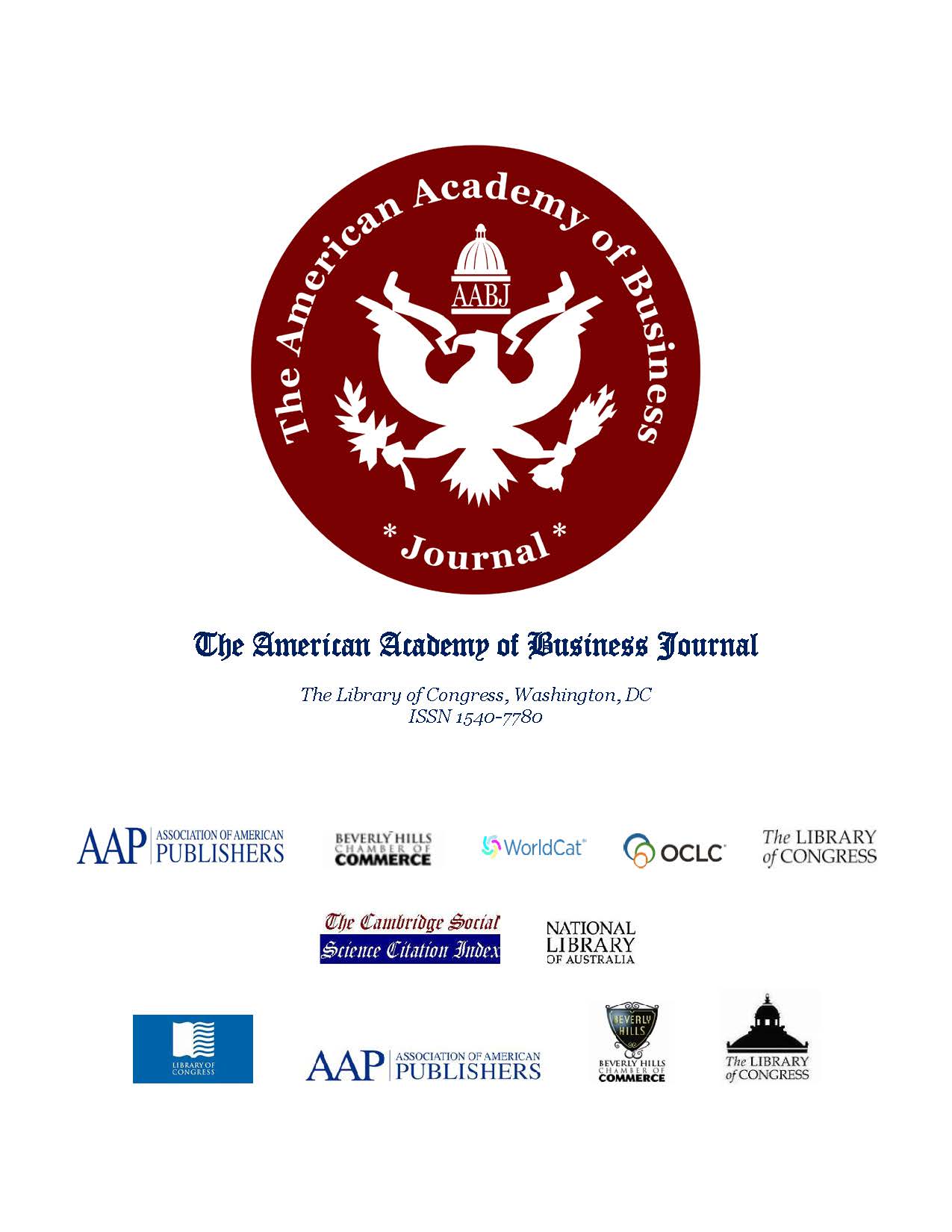|
MBA Business Schools’ Global Best Practices: A Performance Ladder Model
and Discussion of its Application to Australian MBA Business Schools
Dr. Kleanthes
Yannakou, MBA Professor, Holmes Institute and Torrens University,
Australia
Dr. David
Robinson, MBA Professor, Holmes Institute, Australia
ABSTRACT
A benchmarking
study was conducted on a sample of 20 top ranked global MBA programs,
with the aims of
identifying common
characteristics of and strategies adopted by top ranked MBA programs
globally, identifying any regional/country differences among them,
developing a set of recommendations for Australian MBAs to widen the
scope of their activities in post-pandemic resilience efforts. It was
found that top global business schools have adopted a range of
extra-curricular activities that add value to the MBA experience. The
findings were then summarised and it was clear that top-tier business
schools had much in common, which mainly surrounded extra-curricular
attributes that add value to students. Ten such attributes were
converged upon. These were then included in a model referred to as
Performance Ladder, by which any business school can score itself on a
five-point scale, relative to the global top performers. The Performance
Ladder can be useful when business schools are setting improvement
targets, and wish to monitor their progress toward them. This article
includes four worked examples demonstrating the use of the Performance
Ladder. MBA programs in
Australia, like most of higher education, were shocked existentially by
the pandemic, and after three years are setting course for a ‘new
normal’ in terms of infrastructure, education dynamics, and graduate
outcomes. This paper examines options for improvement, applying a
validated global benchmarking instrument to a structured sample of
Australian programs to bring out growth opportunities. The paper reports
on research which validated a benchmarking tool, provoked empirical
insight into the state of the sub-sector, and foreshadowed options for
innovation and development. Australian business schools are world
renowned and respected. There are thirty-five public universities and
two private universities offering MBA degrees. In addition, there are
several private colleges, known as Higher Education Institutes,
registered and approved by the Tertiary Education Quality Standards
Agency (TEQSA) to offer MBA degrees. The main difference between the
university sector and the private higher education sector rests in the
extent of facilities, research focus and extra-curricular activities,
which are more extensive in public institutions.
Full Text
Raising Awareness
of AI: What it is, What it is Not, Impact on Accounting Profession
Dr. Farrell
Gean, Pepperdine University, CA
Dr. Fred Petro,
Pepperdine University, CA
Virginia Gean,
California Lutheran University, CA
ABSTRACT
Disagreement and controversy seem to be widespread over the nature and
definition of artificial intelligence, hereafter referred to as AI.
These differences over the definition of AI have led to a variety of
myths about the impact this unclear concept has and will continue to
have increasingly on the practice and education of accounting. Based
upon a review of relevant literature, this paper will first present some
of the more generally accepted definitions of AI. Following a discussion
of the attributes of AI, some of the misunderstandings or myths that
have developed in both the practice of accountancy and accounting
education will be set forth. The paper will then describe some of the
teaching methodologies that are being used in accounting education to
debunk the AI myths that currently surround the accounting profession.
These pedagogical changes are turning the negative characterizations of
AI into positive benefits to accounting education. The
authors agree that a study of this type should begin logically with an
examination of the concept of intelligence itself. This is partly based
upon the responses given by accounting practitioners and professors
during casual conversation. The recurring opinion expressed was how can
one study the artificiality of intelligence without some general
understanding of the essence of intelligence itself? Sources consulted
reflect a consensus that different definitions of intelligence share
three characteristics in common. The first being that they all share the
fact that intelligence is a property of some agent that interacts with
the environment, second that intelligence is usually indicative of that
agent’s ability to succeed at a particular task or stated goal, and
third that there is an emphasis on learning, adaptation, and flexibility
within a wide range of environments and scenarios. These fundamental
attributes of intelligence may be summarized succinctly by claiming that
intelligence is the ability to detect small goals that need to be
achieved given very dynamic environments. Armed with this three-prong
definition of intelligence, the next step was to investigate the
alternative definitions of attempts to create artificially this
cornerstone of the human condition. One of the simplistic definitions
discovered was AI is a non-human intelligence that is measured by its
ability to recreate certain human skills. Another definition of AI
states that artificial intelligence is the field of study devoted to
making machines intelligent. Thirdly, AI is conceptualized as something
that is devised into machines within a program that can learn, reason,
and auto-correct. Machines with artificial intelligence can perform
speech recognition, perception, learning, reasoning, planning, and
problem solving. Some of these skills include: pattern recognition,
understanding natural language, learning adaptively from experience,
reasoning about other people or things, and strategizing.
Full Text
Case Study -
Company Dispute Resolution By Means of an Integrated Approach Involving
Managerial Mentoring, Management Development Workshops, and
Cross-Functional Team Projects
James
Crowe, Associate Dean, Holmes Institute, Australia
Dr. David
Robinson, Professor, Holmes Institute, Australia
ABSTRACT
The purpose of
this article is to document and illustrate a consulting project in the
form of a case study. The case study explains the processes that were
implemented in a manufacturing firm, located in a host country
(Vietnam), to which the home country corporate head office (France) had
recently appointed a home-country ex-patriate general manager (GM).
Faced with opposition to the organisational changes the new GM attempted
to mandate, the corporate office found themselves questioning the wisdom
of the acquisition and the GM’s appointment. Hence, they initially
sought guidance by commissioning an external ‘social audit’ with the aim
of fact-finding, which was followed by a proposal being generated by
that project team to resolve the dispute using an integrated approach,
which included management development, GM mentoring, and a series of
team-based operational projects, over a ten-month duration. The case
study introduces several models that were used in the project and
reports on the processes implemented and results achieved. This case
study could be beneficial to consultants, trainers, coaches, mentors,
students of business management and leadership and ex patriot managers
of multinational companies.
The Academy of Business Acumen (The Academy) was approached by the
French holding company of a Vietnam-based subsidiary, which had been
experiencing conflict between the established management team and the
newly-appointed CEO, which had escalated and resulted in the resignation
of three key personnel. Several symptoms were apparent but the root
cause was uncertain. It was presumed that there had been poor
interaction between the newly-appointed general manager (French) & the
employees (Vietnamese). The firm was suffering from a lack of
innovation which manifested as poor results from the research and
development team. Quality had also waned and the R&D manager had
resigned. The new general manager appeared to have a dictatorial and
aggressive style that did not sit well with the locals, who felt that
adaptation was needed. Specifically, it was felt that their concerns
went unheard. Some felt that the GM was either ‘looking down’ on
Vietnamese people or just had weak interpersonal skills. Furthermore, it
appeared that the GM’s assistant was becoming too forthright in taking
decisions beyond her technical capability or the extent of her actual
authority. Basically, they were losing trust in the new GM and felt
disempowered. Additionally, the human resources function at the Vietnam
factory seemed to have become ineffective. Employees had no clear job
descriptions and the working atmosphere could be described as ‘heavy’.
People were confused and had their doubts about the future. Some felt
that there were too many meetings, yet employees felt they had ‘no
voice’ and there was a lack of focus on the people side of the
business.
Full Text
Job demands
and Nurses’ Intention to Stay in Saudi Arabia
Dr.
Abdullah Ghaleb Alshareef, University of Jeddah, Saudi Arabia
ABSTRACT
This study
investigates the relationship between the Job demand, job control, job
difficulty, and job satisfaction on nurses’ intention to stay in Saudi
private hospitals. A cross-sectional survey design was used in this
research. Data were collected using a survey questionnaire comprising
four sections (intent to stay, demographic characteristics, Job demand,
job control, job difficulty, job satisfaction, and open-ended
questions). The sample consisted of 345 nurses in private hospitals in
Saudi Arabia. Structural equation modelling was conducted to examine key
relationships. Qualitative analysis of the open-ended questions was also
undertaken. The analysis of the main survey indicates that intention to
stay of nurses is influenced by workload, Job demand, job control and
job satisfaction. Furthermore, job satisfaction was negatively affected
by job demands and job control but was positively affected by job
difficulty. Another important finding was that nurse who worked day
shift perceived higher job difficulty while nurses who worked 12 hours
shift felt that they had higher job demand and less cob control. The
evidence from this study suggests that decrease job demand may increase
intention to stay among nurses in health system. In general, it seems
that the availability of a floating system and heavy workloads are a
greater issue for nurses than expected and it is therefore essential
there is an increased awareness of these issues.
Numerous studies (Bogaert et al., 2013; Hayward et al., 2016) have
linked nurses’ intention to leave with work environment factors, such as
feeling overworked, shift work, and the physical requirements of the
job. In the nursing field, the concept of job demand is an important
driving factor of work-related stress. Job demand (heavy workload) can
lead to stress in the nursing workplace and can occur as a result of a
high nurse-to-patient ratio or work that is too physically demanding.
Moreover, in the health field, several studies (e.g. Roelen, Koopmans, &
Groothoff, 2008) have shown that registered nurses perceive a higher job
demand as leading to less job satisfaction. Today’s working environment
for the nursing workforce contains many challenges, such as high
workloads and long working hours, which are often characterised by
multiple shifts. Thus, as healthcare providers in the current climate
require nurses to work longer hours, it is more difficult for nurses to
have effective personal time or time outside of the profession (Lobburi,
2012). Further, healthcare organisations frequently experience
scheduling issues which can affect nursing experience and performance.
For example, when nurses are scheduled to work unpredictable shifts,
there can be difficulties in accomplishing all task and duties. A
combination of these factors pressures nurses into believing that they
need to leave or look for other positions that will provide greater
flexibility and reliability in their schedules. This suggests that if
healthcare organisations provided better working environments and
greater flexibility with their nursing schedules, fewer nurses would
consider leaving their positions (Brewer, Kovner, Yingrengreung, &
Djukic, 2012).
Full Text
|

 The
American Academy of Business Journal
The
American Academy of Business Journal
.gif)